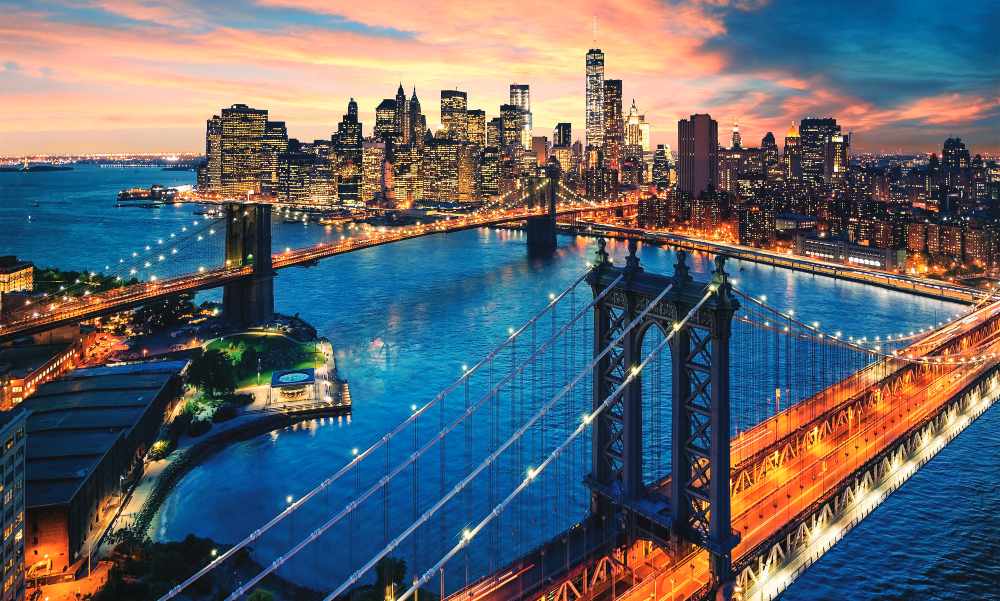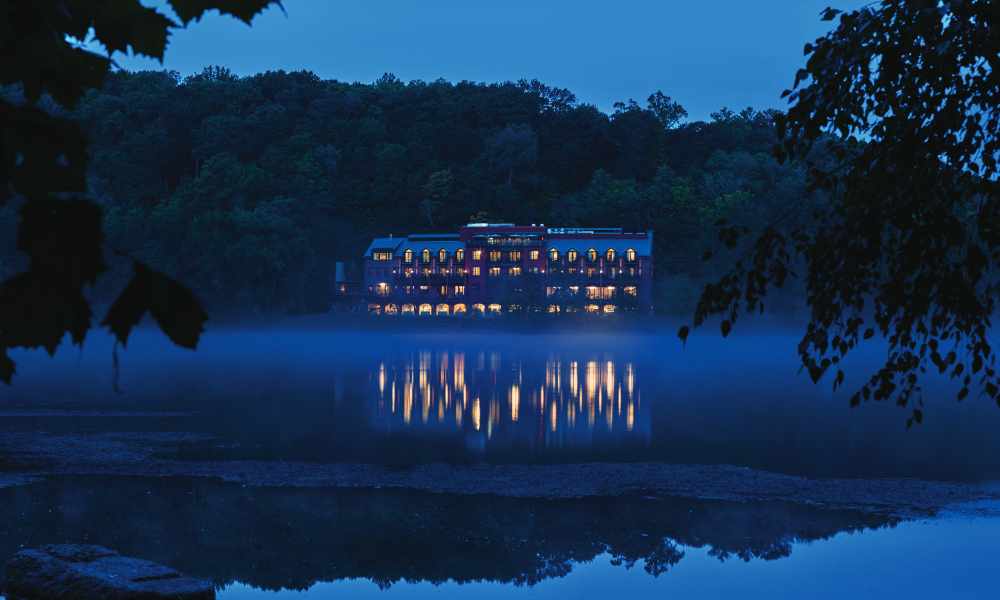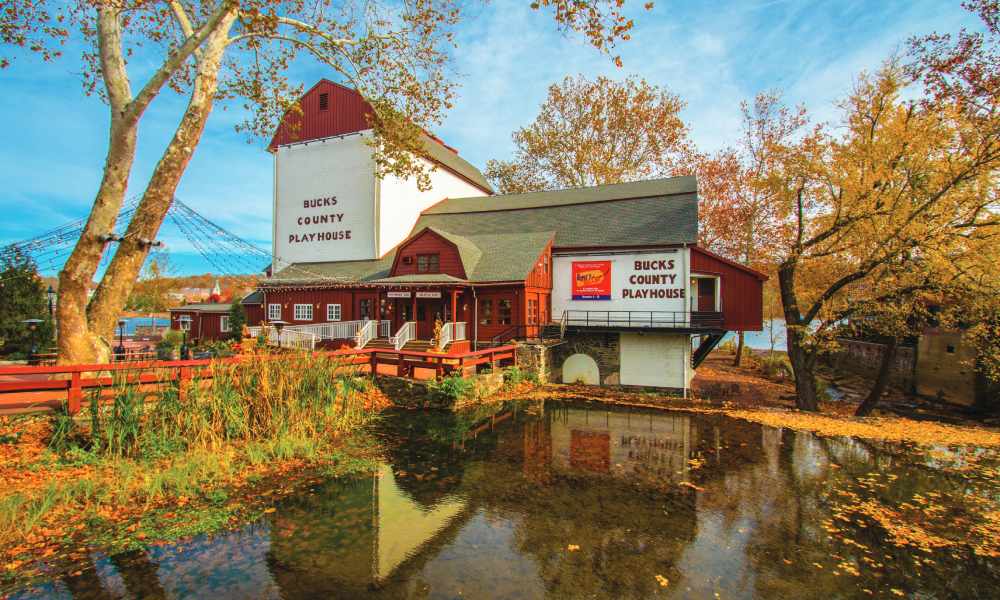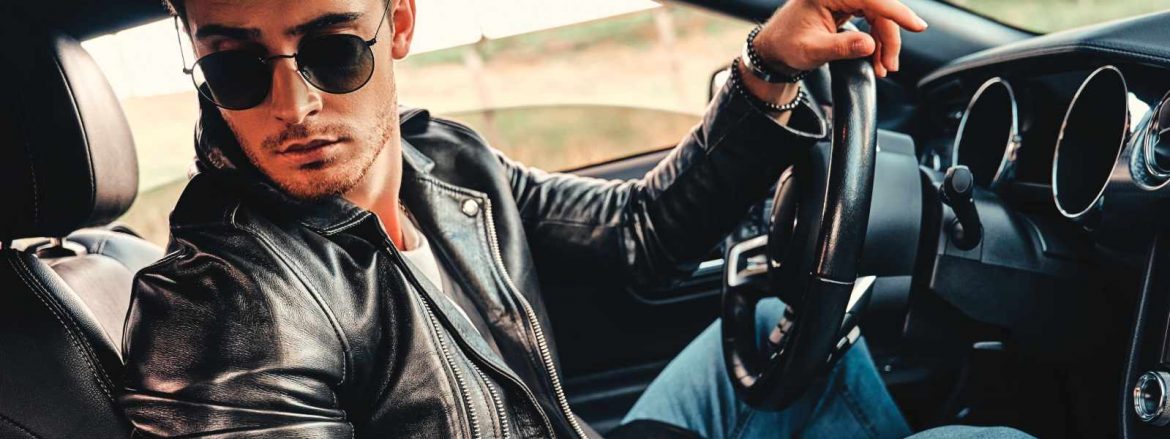This surge in road trip popularity wasn’t assumed, but it was predictable.
In 1903, American physician Horacio Nelson Jackson and automobile pioneer Sewall Crocker, along with their dog Bud, made history by driving the first road trip across America. The turn-of-the-century journey spanned 63 days from San Francisco to New York, a significant feat considering the absence of convenient bridges and interstates, technology like GPS, and thousands of easily accessible accommodations, such as Airbnbs and roadside motels (which didn’t officially originate until 1926). Despite lacking the modern comforts we’re familiar with, the trip was likely invigorating, blessed with zero traffic or highway speed-tracking devices, and quite beautiful without tour buses and mass crowds in stunning National Parks. Above all, this milestone moment, one of the most underrated in American history, inspired the great American road trip for millions of Americans for over a century, romanticized in books like On The Road by Jack Kerouac and Travels with Charley by John Steinbeck, and in movies like Rain Man, Thelma & Louise, and National Lampoon’s Vacation. A celebrated pastime rooted deep, in our culture like baseball, apple pie, and Hollywood, the great American road trip is currently experiencing one of the most powerful revivals in our time as scores of travelers are hitting the road to discover the land of the free’s backyard.
In a post-pandemic America, nearly 80 percent of travelers said they were going to take a road trip in summer 2022, according to data compiled by Travel Pulse, which indicated that’s 208 million American adults based on the latest census. A Travelocity survey in 2015 found only 65% Americans wanted to take a road trip, suggesting interest is ever growing. Even honeymooners are ditching the faraway islands and staying local with unforgettable road trips, a trend shaping the way newlyweds celebrate post-nuptials, according to The Knot.
This surge in road trip popularity wasn’t assumed, but it was predictable. The two-year lockdown and quarantine truly impacted travel behavior, and with stiff rules and regulations at international borders, and of course, the possibility of spreading or getting Covid-19, people were curing wanderlust and improving mental health by finding a means to travel through short distances and social distancing. Americans were renting and buying so many cars, lots were literally empty. With remote work becoming a “new normal,” weekend escapes turned into weekly escapes. Americans today are driving state to state, and coast to coast, documenting their journeys on social media and crossing off bucket lists. Road tripping was never dead. It’s actually more alive now than ever before.

Roadtripping (Photo by Monkey Business Images)
WHY ROAD TRIPPING IS AN ICONIC AMERICAN PASTTIME
As an avid global traveler, getting behind the wheel has been my preference to discover what a destination has to offer. I’ve rented a car in Spain to explore the Basque region; Ireland to awe through the countryside; Hawaii Island to find the hidden roadside gems; and the Yucatan Peninsula to experience cenotes and beaches along the magical Mexican coast.
Road tripping connects travelers to a destination. They can take their time with local attractions that tour buses may miss, or that are too far from their hotel. Experiencing off-the-beaten-path small towns without souvenir shops or mass crowds, places where no one speaks English, is a rare moment that, for me, stands out the most when I think about past trips.
Road tripping in America is different since you’re in familiar territory, but the quest never changes: to explore the unknown. True excitement comes with crossing state lines, each state unique with history, culture, food, and people. Road tripping is also a way to bond with your fellow travelers, ideally the heart of the journey while the drive is merely a vehicle. But what makes road tripping truly special, especially in America, is nostalgia, something you can’t get from flying or train rides or cruise ships. Nostalgia attracts us to road trips because it’s good for the soul. In fact, decades of research show nostalgia helps improve mental health and emotional well-being. According to U.S. News & World Report, nostalgia improves your mood and stimulates inspiration while giving a greater sense of meaning in your life. “Nostalgic memories are very different from other sorts of memory, they have a particular emotional quality,” Richard Cheston, a clinical psychologist, says
in the report.
Ultimately, road tripping gives travelers a greater sense of happiness through nostalgia (versus the various levels of stress travelers experience with flying or the lack of intimacy on cruises). No wonder “road trip” became a buzzword during the pandemic. Road tripping offers freedom to make your own rules and schedule, but also instant meditation mode with moments of quiet and calm through roadside landscapes. No buildings. No skyscrapers. Just you on a highway surrounded by nature, towering trees, desert terrain, or perhaps a tropical rainforest, all crowned by a never-ending, unobstructed and enormous sky.
I have vivid memories of road tripping with my family as a kid. Back then, Smartphones and iPads and Spotify and Netflix did not exist; we bonded in a way we would never do in our current world of “instant gratification.” I remember the sing-alongs and “I spy” games and stops at the gas stations for slurpees. Also, the smell of the ocean in Florida, the sand in my feet, the first sunburn on my neck. I remember driving to Disneyland only to run out of gas on the highway. My brothers and I watched the fireworks from a distance. I remember the late-night arrivals back to our home in Georgia, where my father would carry our sleeping bodies, one by one, into our beds. And even later in my formative years, I remember long road trips to Charleston, South Carolina, for spring break with my high school friends. The conversations that made the 8-hour drive fly by. Using handwritten directions and pull-out maps to navigate, and trusting our instincts on choosing the right restaurant at the right exit. Trying to buy beer with fake IDs, and getting caught. Sleeping bags on floors, and talking until sunrise. There’s something deeply nostalgic about road trips that will always stay with us. For some, road trips are a rite of passage, for others they are long, quiet drives that force you to reflect.
HOW TO PLAN THE PERFECT ROAD TRIP
Like the millions of Americans who bought a car during the pandemic, I gave in. If you’re thinking about buying a car versus renting a car, spend time thinking about the pros and cons. Renting a car may be the less complicated option, but if you plan on road tripping regularly, a car purchase could be a good investment. While I’ve had my car, an Audi Q5 2018, for less than 8 months, I’ve driven it long distances twice, and it’s brought me more joy than the last 10 flights combined. Is a car right for you? Can you afford one in this economic climate? Do you see road tripping regularly in your future?
My purchase wasn’t an easy one, as owning a car in New York City seems counterintuitive. It’s expensive: there is less and less available street parking, and garage spaces cost more than some apartments. The price of gas has also skyrocketed, and while auto insurance is already high in New York City, it increased nationally in 2022 by an average of 4.9%, according S&P Global Market Intelligence, due to economic and societal influences, including inflation, supply chain disruptions, and changes in driving habits.
I still have no regrets. The freedom to hop in a car and drive anywhere, anytime, at my own pace, makes owning a car in NYC worth the impracticality and expensive fees. I’m not alone. According to a report from The New York Times in January 2021, car registrations jumped 37% in NYC. In Manhattan alone, new car registrations rose 76% (45% in Brooklyn), and with good reason. I can choose to spend a day on Fire Island during the week (when it’s not crowded) or head up to the Catskills without spending $400 for a weekend car rental, or I can drive down south to visit my family and have unforgettable experiences in different states along the way.
If you plan on renting a car, always read the fine print, and make sure you rent a reliable car capable of driving long distances.
Travel with friends or family who are just as enthusiastic as you for the trip, have no qualms being the “GPS monitor” through backroads, and be ready to explore! I find that it’s also helpful to budget and plan ahead of time. Often, restaurants and attractions on my itinerary were closed on the day I scheduled them for, and road construction led to hour-long detours on several occasions. Lastly, don’t rely on one GPS. I like to have Google Maps routing my trip on my display screen with Waze running on my phone. While Google owns Waze, the two apps are incredibly different. I like that Waze alerts you about speed traps and police, but I like Google’s simple navigation. An E-Z Pass, an electronic toll collection system used on toll roads, bridges and tunnels, is a must for car owners. Travelers can avoid slowdowns by using an EZ Pass lane. There are 5,000 miles of toll roads in America, and growing 54.7 miles per year, according to Tolling U.S. Highways, so the pass helps avoid delays and conveniently deducts the toll fees from your account.
Lastly, don’t be afraid to take unfamiliar roads. On a recent journey through the southwest, my friends and I initially mapped out the iconic Route 66 from Santa Fe to Phoenix, but instead, we decided to drive Route 377 and Hashknife Pony Express through Payson. It was about the same distance and definitely off the grid. The landscape was barren and mysterious, with hills and windy roads that hugged the hills of Tanto National Forest, making it worth the drive.
I also like to mix up accommodations in my itinerary. I’ll take that extra hour away from the interstate for an excellent resort where my dog can run freely, rather than stay in a small city hotel with little to see.
EAST COAST ROAD TRIPPING
Plenty of famous road trip routes snake through the United States, including Route 66 (California to Illinois); Highway 1 along the California Coast; Texas Hill Country; Bly Ridge Parkway in the Carolinas and Virginia; and Hana Highway in Maui, Hawaii, which I’ve taken twice (the hidden waterfalls, oceanfront seascapes, and thrilling curves and bends make it an American classic and a must).


Manhattan and Brooklyn Bridges (Photo by IM Photo)
I wanted to “christen” my new car with a road trip I have longed to take: New York City (where I’ve lived for 18 years) to Atlanta (where I grew up for 18 years).
The East Coast road trip is relatively simple (mostly I-85 and I-95), and it’s extremely underrated. Unlike the west coast, the states are smaller, so you can literally cross four states in a few hours. East-coast cities are generally more compact, and as more star chef-driven restaurants and luxury hotels continue to open in the most unassuming cities and towns, so the route can be exciting. My trip would take me through Maryland, Virginia, and the Carolinas, and I was happy to have a leisurely schedule for the journey that would take about two weeks.
BROOKLYN, NY TO NEW HOPE, PA
I didn’t start on I-95 right away. While I love Philadelphia, approximately 2 hours from Brooklyn, my friend I planned on visiting suggested we meet in New Hope. A small town 70 miles west of Manhattan, and 40 miles north of Philadelphia, New Hope has been a magnet for the LGBTQ community for decades. In fact, my friend Matt recollects driving to New Hope with his friends in high school, compelled by the open-minded, gay-friendly community and nightlife. New Hope’s gay history is so rich, there’s an actual New Hope Celebrates History archive (newhopecelebrateshistory.org), documenting photos, stories, biographies and news clippings dating back to the 1970s.


River House Before Sunrise (Photo by River House)
With or without the gay history, New Hope is chock-a-block with family-run restaurants, spiritual and New Age boutiques, casual bars, and public art along Main Street, New Hope hugs the Delaware River, which divides New Jersey and Pennsylvania, with plenty of marvelous hike trails are around. We shacked up at River House at Odette’s (274 River Road, Tel: 215-682-2022. riverhousenewhope.com), a 34-room boutique that opened in September 2020 right on the river. The hotel’s structure dates back to the 1780s, and locals know it as the former site of Broadway entertainer Odette Myrtil’s cabaret. She ran a restaurant and cabaret, Chez Odette, here in the 1960s and 1970s, and the hotel pays tribute to her legacy and former stomping grounds, including a piano lounge and a members only club with speakeasy vibes, as well as an annual Love Is Love gala inaugurated in May 2022 to celebrate the LGBTQ community.
Aside from history, the unobstructed river views, whether from the guest rooms (half with balconies) or rooftop lounge, are spectacular. Due to the hotel’s intimate size and scenic location, it’s popular for weddings (yes, there was a wedding taking place while we visited). I also love the fact it has standalone accommodations. This is becoming more common post Covid-19; premium accommodations set apart from the main hotel. Our two-bedroom guesthouse with private entrance, equipped with wrap-around balcony, large living area and kitchenette, gave us plenty of space and privacy, and it was perched right along the Delaware.


Bucks County Playhouse (Photo by Kevin Crawford Imagery)
NEW HOPE, PA TO BALTIMORE, MD
A surprisingly pleasant city that is often overlooked by big cousin DC, Baltimore is Maryland’s ground zero for gay nightlife, mostly centered in and around Mount Vernon (the gayborhood) and Hampden, a dive-y area full of vintage shops, made famous by gay director and local resident John Waters, who filmed scenes here in his iconic movies like Pink Flamingos, Hairspray and Pecker.
Right on Baltimore’s famed waterfront is Four Seasons Baltimore (200 International Drive, Tel: 410-576-5800. fourseasons.com), the ideal hotel when visiting. I love a city hotel right on the water, and also, a city hotel with balconies is rare. My suite was bathed in natural sunlight with floor to ceiling windows, and the balcony was perfect for city and waterfront views. For even more commanding vistas, head up to Bygone, the rooftop bar. There’s nothing else quite like it in Baltimore, and even my local friends had never seen the city in such an inspiring way. Joshua Weeks, a former New Yorker who moved to Baltimore with his partner in 2021, continues to be moved by the city’s attractions and gems. “There is more nuance, diversity, and hidden treasures in this city than we could have imagined,” he says. “Baltimore is steeped in history; its status as an early port city in this country means that many relics of 19th century architecture still stand proud, from government buildings to schools, churches, private residences, and museums. There are more diverse and interesting neighborhoods than we had initially expected, from the charming row houses and nightlife of Fell’s Point to the historical brownstones of Mount Vernon. One thing that makes life in Baltimore truly special is the quality of the institutions; we have some of the finest museums, aquariums, stadiums, universities, and hospitals in the region, making top-notch services, education, and entertainment accessible to those who live here.”


